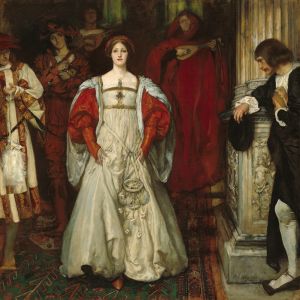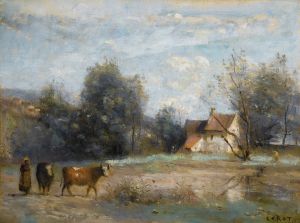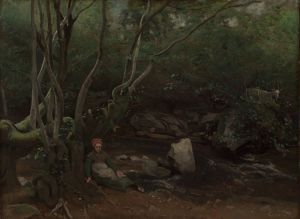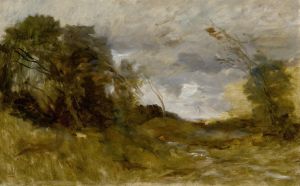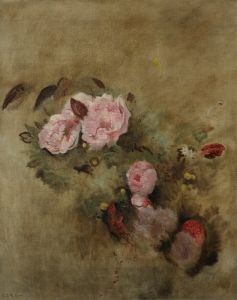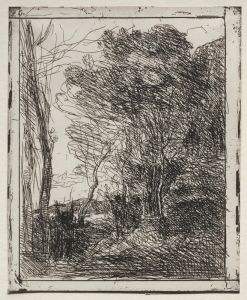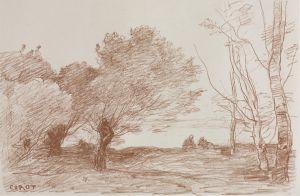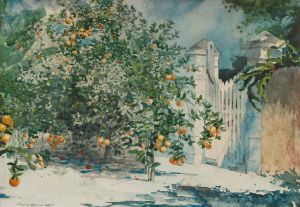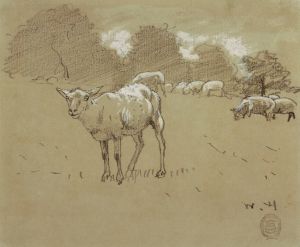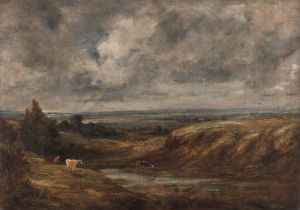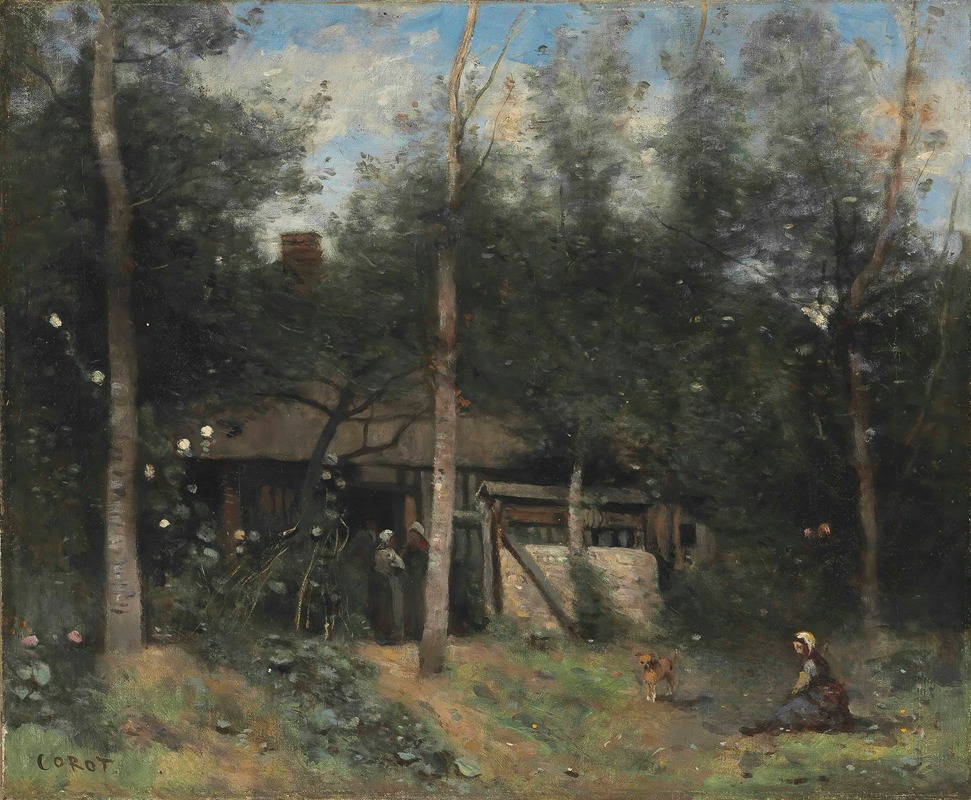
La Chaumiere Aux Sureaux, Normandie
A hand-painted replica of Jean-Baptiste-Camille Corot’s masterpiece La Chaumiere Aux Sureaux, Normandie, meticulously crafted by professional artists to capture the true essence of the original. Each piece is created with museum-quality canvas and rare mineral pigments, carefully painted by experienced artists with delicate brushstrokes and rich, layered colors to perfectly recreate the texture of the original artwork. Unlike machine-printed reproductions, this hand-painted version brings the painting to life, infused with the artist’s emotions and skill in every stroke. Whether for personal collection or home decoration, it instantly elevates the artistic atmosphere of any space.
Jean-Baptiste-Camille Corot (1796–1875) was a prominent French landscape and portrait painter associated with the Barbizon School, a movement that emphasized naturalistic depictions of rural scenes. Corot is widely regarded as a pivotal figure in the transition from the Neoclassical tradition to the Impressionist movement, influencing many artists with his innovative approach to light, atmosphere, and composition.
One of Corot's works, La Chaumière aux Sureaux, Normandie (translated as The Cottage with Elderberry Bushes, Normandy), exemplifies his mastery of landscape painting. This piece captures a rural scene in Normandy, a region in northern France known for its picturesque countryside and distinctive light. The painting features a modest thatched cottage surrounded by lush vegetation, including elderberry bushes, which are referenced in the title. The composition reflects Corot's characteristic sensitivity to the interplay of light and shadow, as well as his ability to evoke a tranquil, almost poetic atmosphere.
Corot often painted en plein air (outdoors), a practice that allowed him to observe and render natural light and atmospheric effects with great accuracy. While it is unclear whether La Chaumière aux Sureaux, Normandie was created entirely outdoors or completed in his studio, the work demonstrates his deep connection to the natural world and his skill in capturing its subtleties. The painting is also notable for its soft, muted palette, a hallmark of Corot's mature style, which contrasts with the more vivid colors used by some of his contemporaries.
The exact date of the painting's creation is not definitively documented, but it likely belongs to the later period of Corot's career, when he focused on serene, idyllic landscapes. During this time, Corot's works often blended realism with a dreamlike quality, earning him recognition as a precursor to Impressionism. His ability to balance detailed observation with an almost lyrical interpretation of nature is evident in this piece.
La Chaumière aux Sureaux, Normandie is housed in a private collection or museum, though its current location is not widely publicized. Like many of Corot's works, it continues to be celebrated for its timeless beauty and its role in shaping the evolution of landscape painting in 19th-century France.
This painting is a testament to Corot's enduring legacy as one of the most influential landscape artists of his time. His work bridges the gap between traditional and modern approaches to art, offering viewers a glimpse into the serene and harmonious relationship between humanity and nature.





